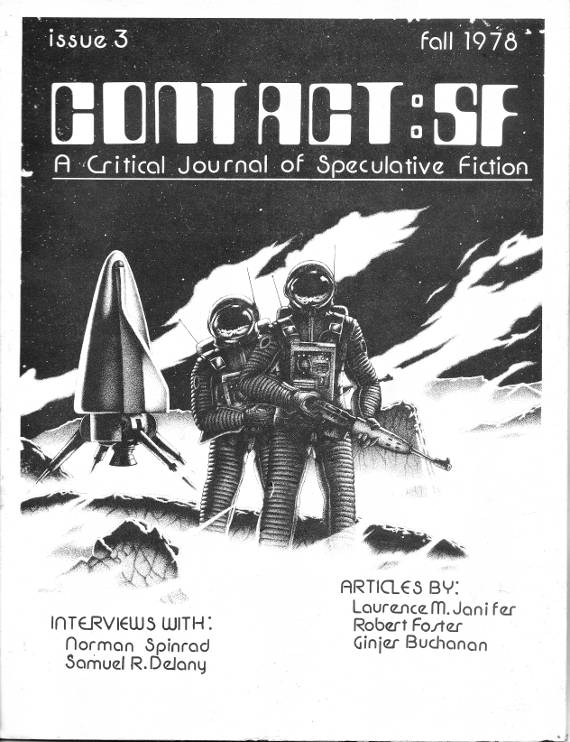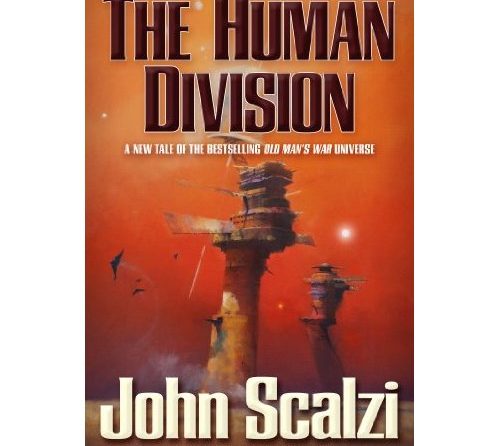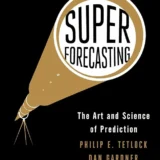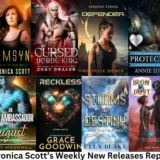
Gafiate, for those whose Fannish Lexicon isn’t handy, is Fan Speak for the act of ‘Getting Away From It All’. Leaving Fandom. Putting conventions and fanzines and crazy projects and far-flung friends behind you. It can be a liberating thing but it is always a sad thing.
Thirty five years ago I didn’t yet know that in just a few short years I would be performing Gafia upon myself. 1978 was in fact a year with quite a lot of FIAWOL in it (FIAWOL – Fandom Is A Way Of Life – the uber opposite of GAFIA). You might even say that I’d reached the apex of my budding career in Fandom; the year before I’d been a member of the Con-Com (Convention Committee) for the 35th Worldcon, responsible for assisting the Chairman in just about every area of Worldcon-running and specifically managing the Hugo Awards Banquet(!) (My primary accomplishment there was under-booking the room. The lesson I learned was that if you stay calm, you can usually find a solution.) I’d been invited to work the following year’s Worldcon (Iguanacon in Phoenix); I’d become friends with a filthy-pro (it’s an affectionate term) who was himself a SMoF (Secret Master of Fandom) Jack Chalker (He’d just had his first novel published) and was meeting others; I’d founded a small club in New Jersey, produced two issues of a fanzine that was showing steady improvement; I was writing reviews of SF films for my college paper (the mid-late 70s saw a LOT of blockbuster fare), collecting rejection slips from Asimovs, F&SF and Amazing itself and hanging out with the right connections (should I be interested in an editing career in future, which I was) and
I’d just landed a Leadership Grant from my University. To produce a semi-prozine.
The timing couldn’t have been more perfect; the Up-coming Iggiecon offered me the venue of all venues to debut the new version of my fanzine (my co-editor, Joseph Zitt, and I, along with the handful of geeky-nerdy creative types I hung out with had decided that Algol, The Alien Critic and Locus needed some more competition in the sercon (SERious CONtent) arena. Mostly we also decided that we couldn’t compete with the likes of The Spanish Inquisition, Maya, Rune, The Invisible Fan, Brain Candy and a host of other more fannishly oriented ‘genzines (general zines).
$600 dollars was awarded to my proposal to publish CONTACT: SF A Critical Journal of Speculative Fiction. Our forte would be intellectual and erudite interviews with leaders in the field, reviews, a variety of artwork and the occasional humorous essay. Our friend Frederick Paul Kiesche III – the world’s most voracious reader – was on board for producing tens (if not hundreds) of short reviews; my then college sweetheart was a budding, very talented artist with an eye for fantastic imagery; Robert Walters, a Philadelphia area artist, was just beginning to illustrate for the magazines and we were able to tap him for the cover (his instructions: an image that SCREAMS! Science Fiction). Bob would go on to become the world’s leading paleo-artist, depicting the latest theories in dinosaur biology with scientific accuracy; other friends had contacts into the comic book world and were able to obtain artwork from Howard Chaykin, Alfredo Alcala, Craig Russell, Gene Colin, Ernie Chan, Alex Nino and Dave Cockrum; Fred’s father agreed to do the linotyping (his profession); we tapped all of our fannish friends, landing an article on Fandom from Ginjer Buchanan that continued a series that had originally run in David Hartwell’s ill-fated Cosmos magazine (Ginjer would go on to become Editor-in-Chief at Ace Books); Laurence Janifer and Bob Foster (more filthy pros) agreed to write some content and other friends – both fannish and mundane – contributed this and that.

$600.00 in 1978 comes to roughly $2100.00 today. (What fanzine editor couldn’t use $2100 an issue, free and clear?). I sweated the budget. If I remember correctly we paid $125.00 for Bob’s cover, half-a-cent per word for the outside copy (in-house writing was naturally uncompensated), bits and pieces here and there, with the balance going for the printing. Contact would be an offset printed ‘zine, 8.5×11 in size and perfect bound (glued binding). Again, if memory serves, we printed off 1,000 copies and were planning on offering them for $1.25. I was VERY confident that we’d move at least half of those at Worldcon – recovering our dollars for the next issue – and that the remainder would help us show a small profit and have plenty of copies to trade “for the usual” (insuring that we’d have future letter column participation from other fanzine folk).

The reason I was so confident was – Joe Zitt had lined up two phenomenal interviews. One with Norman Spinrad (who was still well-known for his Star Trek script contribution – it was still less than a decade since the show was cancelled – and Samuel R. Delany was settling into his place as SF’s leading literary critic just a couple of years after the debut of his novel Dhalgren. The new wave was still rippling through the industry, Joe Haldeman had recently gotten a record-breaking advance for his second novel, new imprints were being established to sate the demand for SF (Del Rey, DAW a bit earlier) and television and movie fare were making it clear that SF was in a boom phase.
We’d already scheduled out three future issues for which much of the material was already in-hand: one focused on editing in the field and was to contain interviews with four of the leading editors at the time – Ben Bova, George Scithers, David Hartwell, and Edward L. Ferman (most of those are on cassette tape somewhere). Interviews with Hal Clement and Jack L. Chalker had been lined up and we were preparing a special fantasy art issue (the portfolio containing all of the artwork – some of it worth hundreds if not thousands today – was lost – somewhere.) and would also have included scheduled interviews with Lin Carter, L. Sprague de Camp and Catharine G. de Camp.

All I needed to do was get a box of those issues to Phoenix Arizona, where I intended to hand a copy to the GoH, Harlan Ellision, who had fairly recently featured the work of our two interviewees in a book titled Dangerous Visions and had been known to involve himself in fanzines in the past. It wasn’t too much to hope that a future issue would feature something from Harlan – not to mention everyone else at the con who were given advance notice of the publication and, so far as we could tell from New Jersey, were looking forward to giving it an honest once over.
The schedule for everything was tight and we had our fair share of screw-ups along the way. The issue was laid out by preparing the copy in columns, having it linotyped, cutting out the columns and then (using 3M Spray Mount) affixing them to gridded layout boards. Please forgive the sometimes crooked columns, I was not cutting and pasting under the most ideal of circumstances. Press Type letters were used for headlines and interstitial text. The illustrations were Xeroxed, painstakingly cutout with an.Xacto blade and pasted in – hopefully where they were supposed to go. We only had one screw-up with pagination (there is no page 16); only had to do major repair work on one illustration (see if you can find it). I think we achieved a pretty good balance of white space and interesting – even compelling – page layouts.
We got the final copy to the printer in time – or so we believed. We’d been quoted a time frame. Unfortunately that time-frame only included the time needed to print and collate. It DID NOT include the 24-48 hours required for the glue in the binding to dry.
That extra day put availability of the copies one day past my scheduled flight departure for Phoenix. We tried to encourage the glue to dry faster but that didn’t work. (I don’t know why I thought cursing would make glue dry but apparently I did.)
Ultimately we had to arrange for overnight shipping to the hotel via American Air Lines Air Freight. And No, we didn’t buy insurance.
I arrived at the con the requisite day before the start, a reproduction of the cover in hand. All of the other early arrivals seemed duly impressed and accepted my explanation that the copies would be delivered to the hotel the following day.

By Saturday of the convention I’d come to accept the fact that Contact would not be distributed at the convention. I’d gotten plenty of fanzines ‘for trade’ on the promise of delivery along with a lot of commiseration. Consolation was found in a few con activities (crowd-control for both the Gahan Wilson and Harlan Ellison signing events – giving me a lot of quality time with both individuals). But that obviously fell well short of what I had been hoping to accomplish.
Once back home (it was a harrowing return that actually involved being flown to the wrong airport and a corrective helicopter flight, followed by a Taxi ride during which the driver fell asleep numerous times – in the middle of the highway). I went on the warpath against American Airlines. I filed a small claims action – seeking the shipping costs and lost sales. At a court-appointed arbitration meeting I learned the legal maxim: you can’t recover for might-have-been. Recovery of the initial $600.00 investment was just not gonna happen. American paid out a bit more than the shipping costs – $75.00 bucks I think.

And so Contact:SF never went anywhere. Gone is the artwork portfolio; gone are the linotypes of the special editors edition. Gone were my early dreams of Hugo nominations and giving Locus and Algol and The Alien Critic a run for their money.
My frustration and disappointment affected everything. The girlfriend left me. I lost all interest in fanzine publishing. Over the next few years even conventions became a source of irritation rather than a source of fun and creativity. I stopped collecting rejection slips (you can’t get them unless you submit) and I ended up taking a different path (writing for paintball publications and spending a quarter-century helping to build that sport and industry. I’ll tell you though, a spot on the Top 100 Players of All Time -1999- just isn’t the same as a Hugo nod….). Finally, in 2006, after selling off part of my paintball business (and my house), I decided to make a go of Fandom again, started writing fiction again and began a fairly well-received blog titled The Crotchety Old Fan. (And then a bit later on all of this Amazing Stories stuff happened.)

Fortunately Joe Zitt had kept a couple of dozen copies out (as we’d arranged) and a few have survived. A couple of years ago I finally got around to giving Ginjer Buchanan one of the few remaining copies. And today you can take a look at the entire issue (in PDF) as I finally broke down and sacrificed one of my two remaining copies to the scanner.
In my wildest imaginings, I never thought I’d be reprinting some of my own stuff 35 years on. Getting Contact:SF back out there online isn’t quite the same as having been able to produce it at Iggie, but it certainly is better than nothing, with the added benefit that there just might be some interest in checking out the thoughts of two of our best authors at an earlier period of their careers, enjoying some artwork from some who have sadly passed on and getting a glimpse into the world of what might-have-been. Who knows, maybe I ought to be thanking American Airlines for losing the package. Had things worked out the way they were supposed to, I might never have gotten the opportunity to publish Amazing Stories.
Over the next couple of days I’ll be putting the file up on EFanzines. In the meantime, check out my (clunky) editorial where I lament the loss of the SF Ghetto – 35 years gone by.

Steve Davidson is the publisher of Amazing Stories.
Steve has been a passionate fan of science fiction since the mid-60s, before he even knew what it was called.









